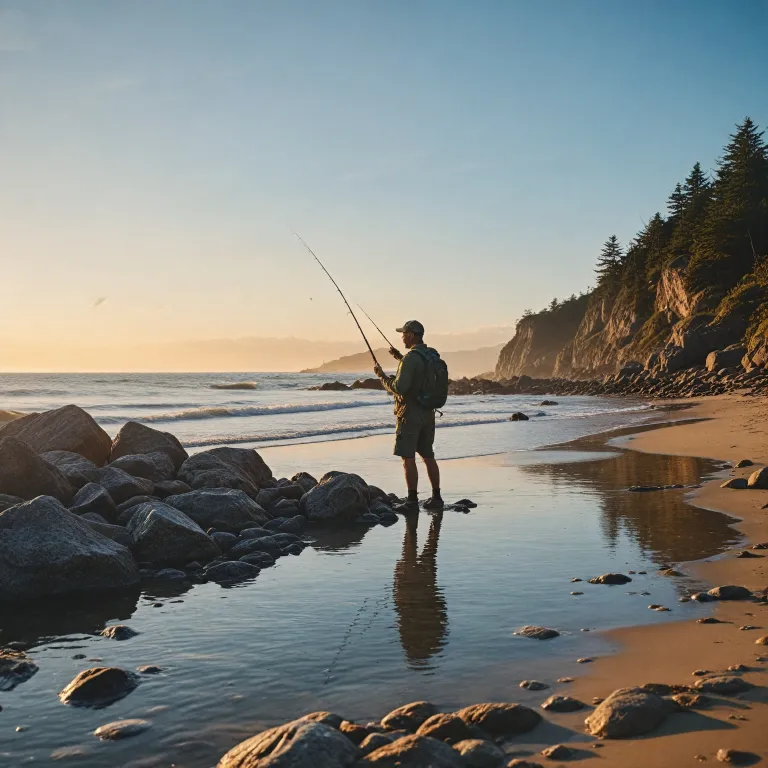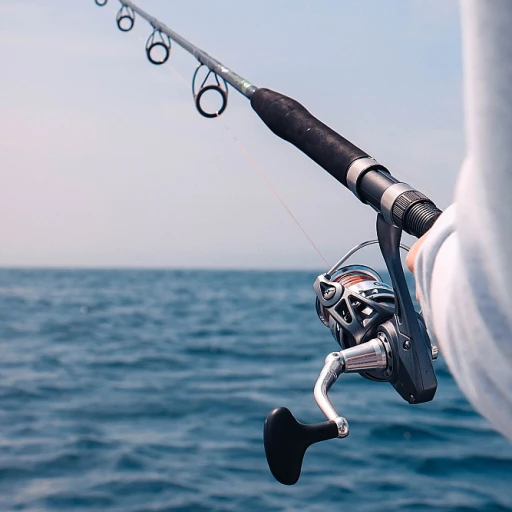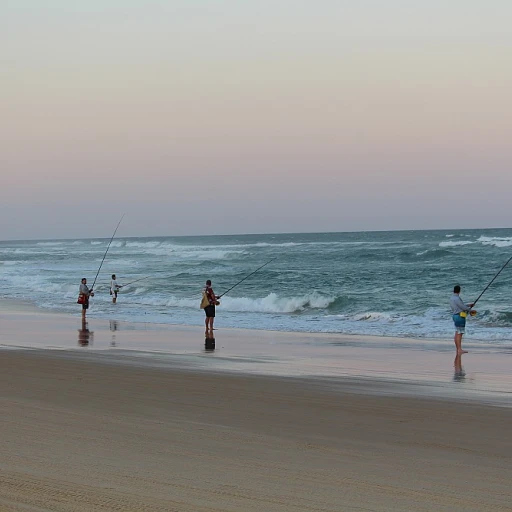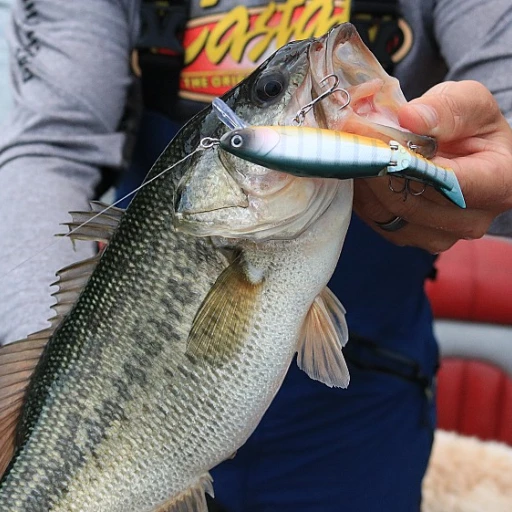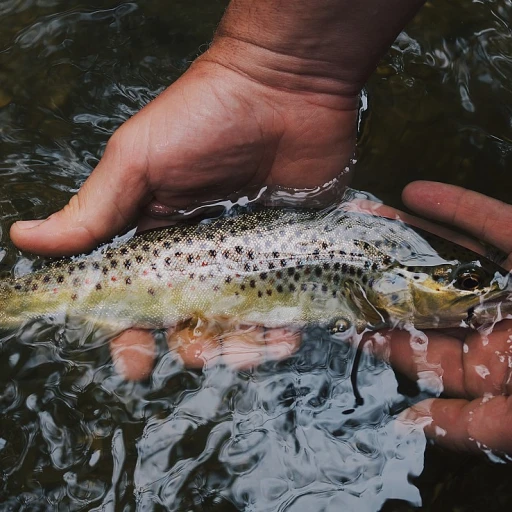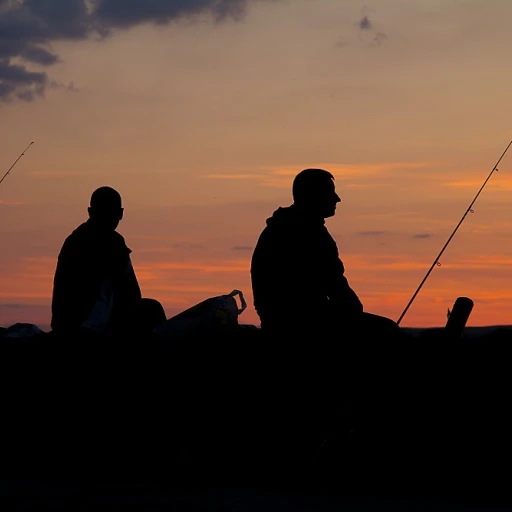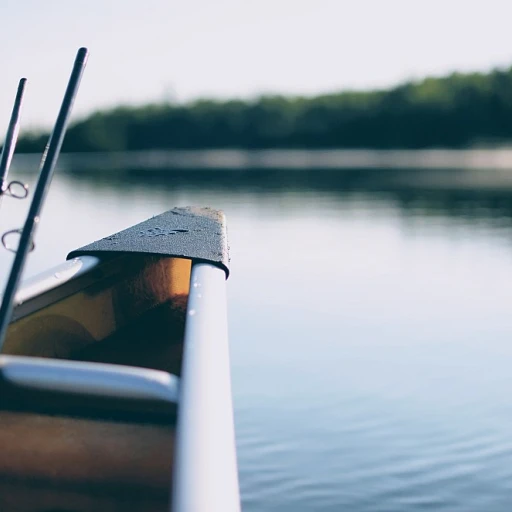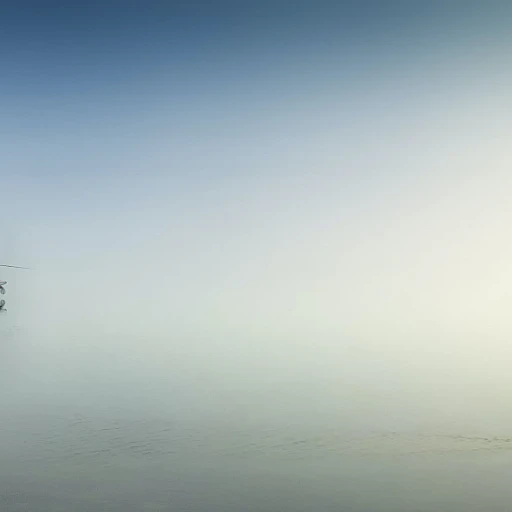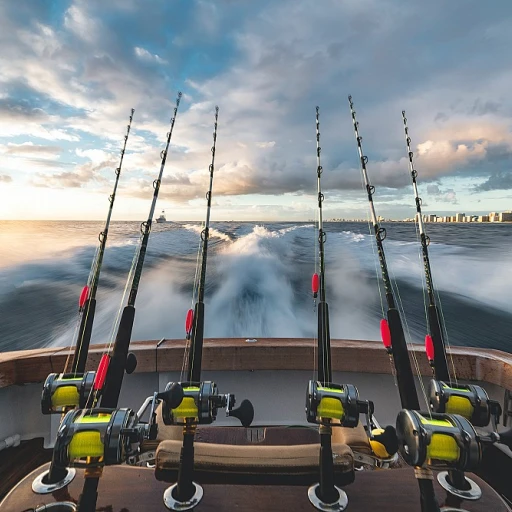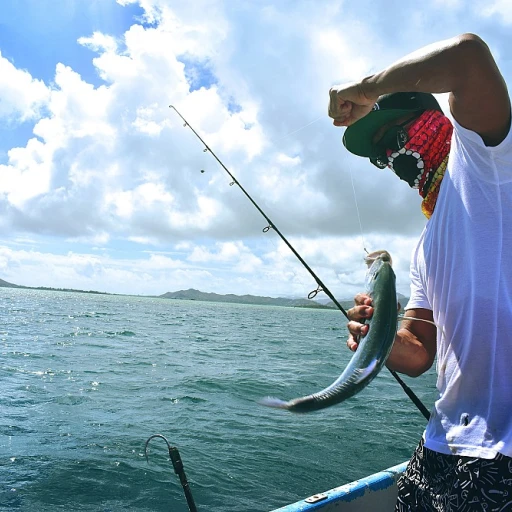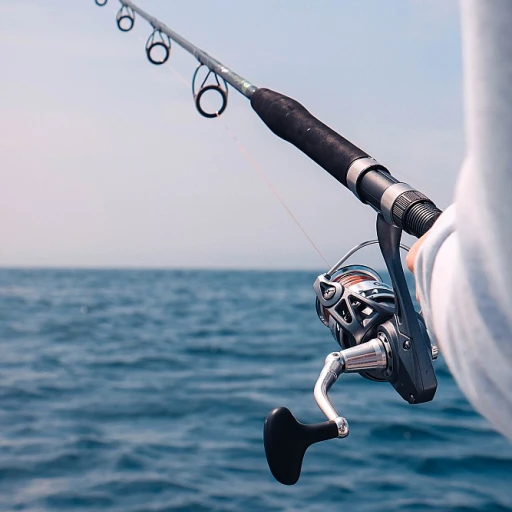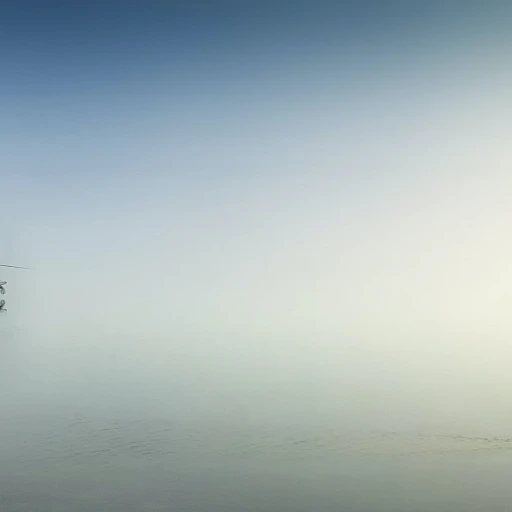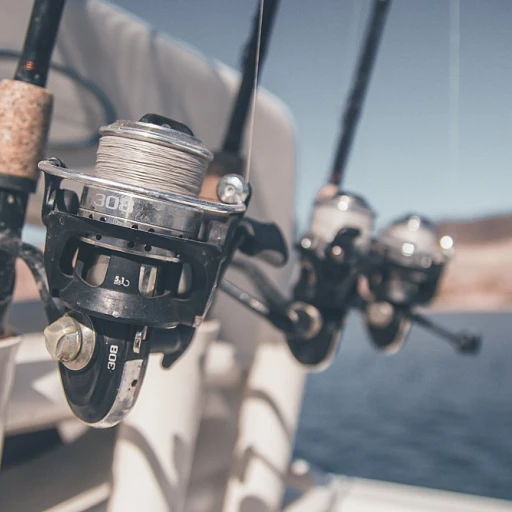
Understanding Saltwater Fishing Environments
The Diversity of Saltwater Environments
Saltwater fishing offers a world brimming with variety, from serene inshore waters to the vast expanse of deep sea adventures. Anglers can explore several environments, each presenting unique opportunities and challenges. Understanding these different environments is essential for fishing success, especially for those just starting out.
Whether you are casting a line from a pier, venturing offshore on a boat, or paddling a kayak along the coastline, each setting requires specific strategies and gear. Knowing your fishing environment helps you optimize your choice of fishing rod, reel, and bait.
Surf Fishing and Beyond
Surf fishing is one of the most accessible and popular methods for anglers looking to catch saltwater species. Standing along the shoreline, one can experience a dynamic interaction of waves and water while hoping to land a great catch. For a seamless shoreline experience, consider enhancing your day out with a fishing cart, which can simplify the transportation of gear across sandy beaches.
On the other hand, inshore fishing provides a more sheltered experience, typically yielding catches of smaller species but offering an equally rewarding adventure. It's crucial to understand the topography and movement of water in these environments because knowledge of tides and currents can significantly affect where fish congregate.
Adapting to Different Saltwater Conditions
The conditions you face while saltwater fishing will vary regardless of whether you’re on a boat in open water or doing pier fishing at your local marina. External factors like weather, water temperatures, and time of year will play vital roles in determining what techniques to use and what species you might catch. Understanding these elements can help when selecting your fishing gear and planning your approach.
The variability in saltwater environments calls for flexibility. Guides often advise new anglers to study local fishing basics, familiarize themselves with fishing tips specific to their chosen locations, and consult local fishing regulations to ensure an ethical and legal fishing practice.
Essential Gear for Saltwater Fishing
Key Equipment for Saltwater Expeditions
Embarking on your saltwater fishing adventure requires having the right gear in your arsenal. Understanding the specific equipment needed is essential for anglers looking to conquer both inshore and offshore waters. With the variety of environments present in saltwater fishing, from the serenity of inshore waters to the thrill of surf and pier fishing, selecting appropriate gear becomes paramount.
Starting with the fishing rod and reel, each angler should choose a setup that matches their target species and fishing style. A quality rod and reel combination, often made from graphite or fiberglass, can make a significant difference in your ability to effectively fish different environments.
- Rods: Surf rods are typically longer for casting greater distances, while shorter rods are ideal for pier or kayak fishing. Inshore rods are generally medium-light to medium-heavy to handle different species.
- Reels: Select a saltwater reel with a robust drag system that can withstand salty conditions, ensuring it has a good line capacity for deep sea targets.
Equipping yourself with the right bait and lures also plays a crucial role in attracting the desired fish species. The choice between live bait, such as shrimp or sardines, and artificial lures will vary depending on your target species and where you fish.
Additionally, having safety equipment and adhering to fishing regulations is vital for a sustainable and enjoyable experience. Items like life jackets, sunscreen, and a first-aid kit should always be part of your pack, no matter the fishing destination.
When obtaining your gear, many retailers offer free shipping, allowing you to conveniently assemble your fishing set-up at home. Equipped with the right tools, you’ll find yourself better prepared for whatever the saltwater throws your way, increasing your chances of a successful catch.
Choosing the Right Bait and Lures
Lure Selection: Enhancing Your Saltwater Adventure
Choosing the right bait and lures in saltwater fishing can significantly impact your success in attracting the desired species. Whether you aim to catch vibrant inshore saltwater fish or delve into the adrenaline-rushing deep sea fishing experiences, understanding your target can make all the difference.
One of the pivotal choices anglers face is deciding between live bait and artificial lures. Live bait like shrimp, seaworms, and small fish often imitate natural prey, making them irresistible to predatory species. On the other hand, artificial lures come in diverse styles and are designed to mimic the movement and appearance of the prey. From jigs to plugs and spoons, the options are plentiful, each suited to different environments and fish types.
- Inshore Fishing: Opt for lightweight lures for smooth waterways.
- Surf Fishing: Heavier tackle may be needed to cast beyond the breaking waves. For a complete guide on surf fishing tools, check out exploring the thrill of steelhead fishing.
- Pier Fishing: Sinkers and spoons tend to perform well off structured environments.
- Kayak Fishing: Compact and versatile lures are essential for maneuverability.
Moreover, understanding the seasonal behaviors of fish helps in selecting the best lures. For instance, certain fish might be more inclined to take a specific fishing bait during spawning periods.
It's also vital to evaluate your fishing gear. Ensure your rod and reel are in harmony with your selected lures to maximize efficiency and enjoyment in your saltwater fishing ventures.
Safety and Regulations in Saltwater Fishing
Stay Protected: Safety First
When venturing into the vast waters, be it for inshore saltwater or deep-sea fishing, safety must be your top priority. It’s crucial for anglers to familiarize themselves with the specific safety regulations of their fishing location, as well as basic safety equipment for a day out in the water.
- PFDs (Personal Flotation Devices): Whether you're casting from a kayak, surf, or a boat, always have a lifejacket handy. It's a non-negotiable piece of gear to prevent any mishap.
- Communication Devices: Equip yourself with a waterproof mobile phone or a VHF radio. In case of emergencies, they are vital for signaling rescue teams.
- Weather Awareness: Always check the local weather forecast before heading out. Conditions can turn unpredictable. Fishing might be perfect on a pier one moment and stormy the next.
- First Aid: Carry a basic first aid kit to handle minor injuries like cuts from hooks or other fishing gear.
Know the Rules: Regulations Matter
Fishing regulations in saltwater environments are designed to ensure sustainability and conservation. Ignoring them not only risks penalties but can harm the delicate oceanic ecosystem.
- Licenses: Ensure you have the appropriate fishing license for your region. Regulations can vary significantly between different areas, be it inshore fishing or more expansive waters.
- Catch Limits: Be aware of species-specific catch limits. This includes size restrictions which help in maintaining a healthy fish population.
- Seasonal Restrictions: Some species have closed seasons to protect breeding times. Know when these periods occur for the species you're targeting.
By prioritizing safety and adhering to fishing regulations, you not only protect yourself and others but also contribute to the preservation of the sport for future generations.
Techniques for Successful Saltwater Fishing
Mastering Techniques for Landing Your Catch
When it comes to saltwater fishing, the right technique can make all the difference between a successful day on the water and coming back empty-handed. It’s important to adapt your fishing style depending on whether you're engaging in surf fishing, pier fishing, or inshore fishing. Each method demands unique skills and strategies.- Surf Fishing Techniques: For those who enjoy the rhythmic challenge of the waves, surf fishing is a must-try. The best way to succeed is by understanding the tides and timing your fishing trips. Use a slightly heavier rod and reel to withstand the surf’s pull and cast your line beyond the breaking waves where larger fish usually roam. Regularly adjusting your bait can also attract a variety of fish species.
- Pier Fishing Methods: Pier fishing offers a stable platform and allows anglers to explore both shallow and deep water. Jigging, or the art of moving the rod and reel in a manner that mimics a swimming bait, is particularly effective here. It’s key to be mindful of the pier’s shadow, as fish are often drawn to these areas for shelter.
- Inshore Fishing Approaches: This method involves fishing in calmer waters such as bays and estuaries. A light rod and reel combo is perfect for targeting species like redfish and snook. Employ the "sight fishing" technique, which involves spotting the fish in the water before casting your lure, for a more targeted approach.
Conservation and Ethical Fishing Practices
Practicing Responsible Fishing for Future Generations
Engaging in saltwater fishing is both a thrilling sport and a delicate balance between enjoyment and ecological responsibility. To ensure our oceans remain teeming with life for years to come, anglers must embrace sustainable practices that minimize the impact on marine environments.- Catch and Release Techniques: When fishing, particularly if you’re aiming to catch specific saltwater species, practicing catch and release helps maintain fish populations. Using circle hooks can reduce gut hooking, lowering injury risks to the fish. Handle your catch with wet hands or a wet cloth to protect their slime coat and ensure a quick and gentle release.
- Follow Local Fishing Regulations: Abide by local fishing laws and regulations, including size and bag limits. This not only helps preserve the fish population but also keeps anglers compliant and responsible. It’s crucial to stay updated as regulations can vary by location and species.
- Choose Eco-Friendly Gear and Bait: Wherever possible, opt for biodegradable bait and environmentally friendly fishing gear. It’s a small step that significantly reduces environmental harm. Ensure that all discarded gear, like fishing lines and hooks, are properly disposed of to prevent harm to marine life.
- Respect Marine Environments: Be mindful not to disrupt natural habitats, whether fishing from a pier, surf, kayak, or boat. Keep noise levels down and avoid trawling through sensitive areas, such as coral reefs or seagrass beds. Every action counts towards preserving the sacred balance of our oceans.

